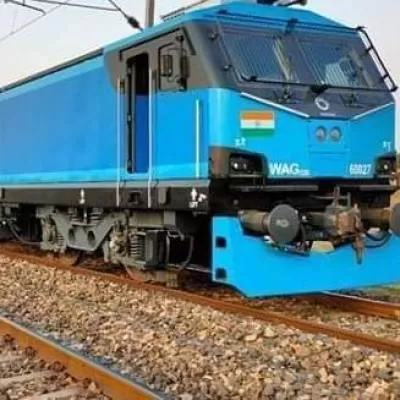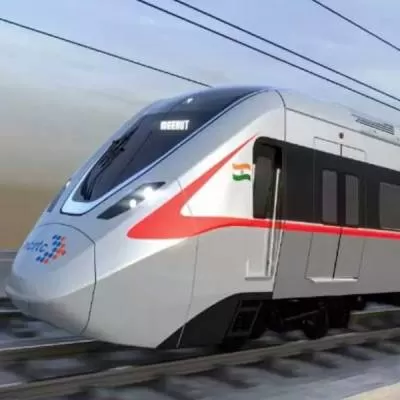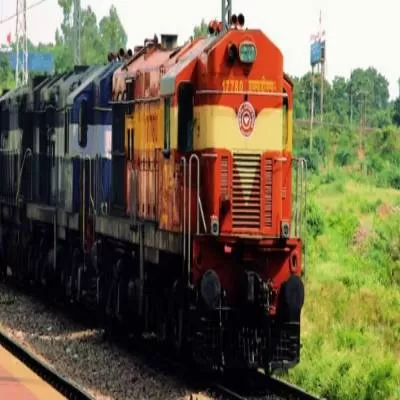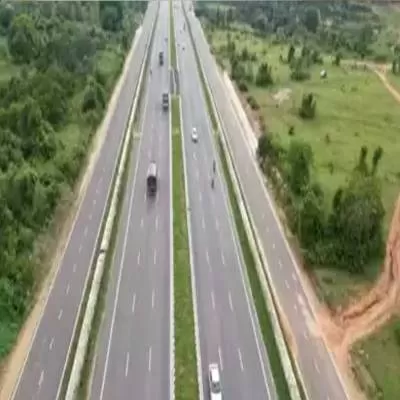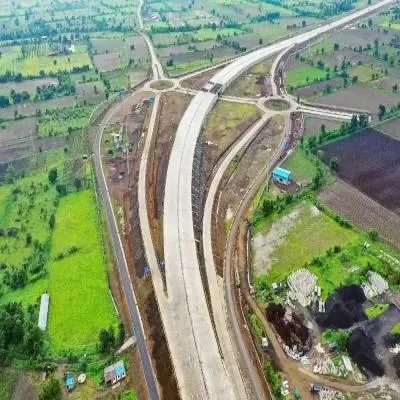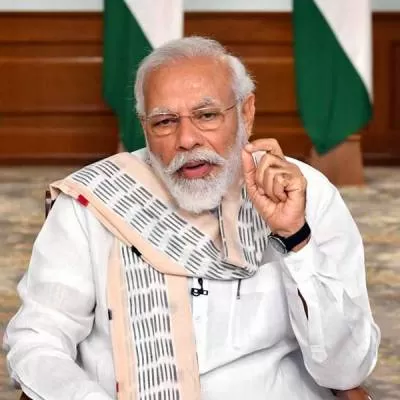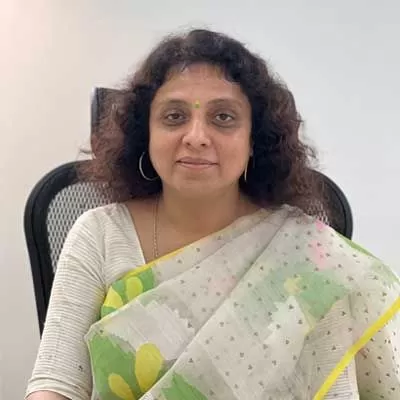- Home
- Infrastructure Transport
- ROADS & HIGHWAYS
- Respected Shri Narendra Modi,
Respected Shri Narendra Modi,
By 2020, India is set to become the world's youngest country with 64 per cent of its population in the working age group. With the West, Japan and even China aging, this demographic potential offers India and its growing economy an unprecedented edge that economists believe could add a significant 2 per cent to the GDP growth rate.
If one was to think of the three most pressing problems and areas where solutions are needed, one could sum them up as IIM: Inflation, Infrastructure, Manufacturing.
To hit the ground running you need to steer around areas which need tweaking. One area which has caused many obstacles has been the land acquisition bill. If one can push article 254 into zones which are a hindrance in implementation of infrastructure projects, one can have states get the President's assent over centre's policies. Further there are low hanging fruits in the form of:
- Projects that are 90 per cent complete but stuck due to last mile connectivity, permissions, protests etc.
- Projects that have obtained financial closure but are stuck due to permissions. Here the Project Monitoring Group has been reasonably successful in the last three months. This can be extended to the state level version of the PMG where they report to the CM of each state and the state CMs collectively work in a group with the PMO.
- Projects stuck due to arbitration. Here a fast track arbitration court can serve to release over Rs 25,000 crore into the system.
 INFLATION: Strengthening our currency is a great economic mission. After all devaluation is a reflection of our economic deficiencies. Inefficiencies are hidden due to lack of accountability or those not accounted for, like subsidies which are reflected in a high inflation. Managing the government efficiently should be able to thwart any further increase in inflation. This economic ill has its root cause in supply constraints especially in food supplies. Our food supply system has on one hand ample (upto 30 per cent) supplies rotting in warehouses while shortages abound. Supply has to be debottlenecked.
INFLATION: Strengthening our currency is a great economic mission. After all devaluation is a reflection of our economic deficiencies. Inefficiencies are hidden due to lack of accountability or those not accounted for, like subsidies which are reflected in a high inflation. Managing the government efficiently should be able to thwart any further increase in inflation. This economic ill has its root cause in supply constraints especially in food supplies. Our food supply system has on one hand ample (upto 30 per cent) supplies rotting in warehouses while shortages abound. Supply has to be debottlenecked.
At your speech at the Central Hall of Parliament, you focused to serve three important groups of our country; the poor, women and the youth. All the three constituents are badly affected by unemployment.
Poverty is a disease which continues to grip the economic weaker sections. About 92 per cent of India's 470 million workers are informal workers. Informal employment is insecure, poorly paid and has no social security. There is also a difference between wages of regular workers and informal or contract workers. The latter constitute one-third of workers in the manufacturing sector. An identity card like 'Aadhar' to help the informal workers secure provident fund which gets cut but does not find its way into their credit, can be secured for them.
As people get more educated, unemployment rises. It is the highest among women graduates at about 60 per cent. After 10 years, 40 per cent of all girls will be matriculates - but India has the lowest female employment rate along with Pakistan and Middle Eastern countries. According to Indian government data, although growth averaged 8.7 per cent from 2005 to 2010, only 1 million jobs were created, leaving 59 million new entrants on to the labour market with nothing. Unemployment among the educated is very high. One-third of our unemployed are graduates and above. Clearly, opportunities need to be provided in a big way.
Then there is the power of youth. A third of the population is under 15, more than half under 24; every third person in an Indian city today is between 15 and 32; the median age in India is 27. In about seven years, the median individual in India will be 29 years, very likely a city-dweller, making it the youngest country in the world. Now as regards opportunities: The service sector provides only 26 per cent employment but contributes 58 per cent of GDP. We need to increase the share of manufacturing in GDP. It is currently 16 per cent - compared to South East Asian countries like China, Korea and Indonesia, where the share is 40 per cent to 50 per cent of GDP. Resultantly, the share of agriculture in employment is going down in India. But those moving out of agriculture are migrating to low productivity employment. Ideally, they should move into the manufacturing sector
INFRASTRUCTURE:
The single biggest failing that led infrastructure growth to languish despite a good start was the lack of transparency. When natural resources like mines, energy, rights to allow people to travel etc are auctioned in an unfair and non-transparent manner, the right to demand accountability and audit is also lost leading to sub-standard use of resources and the creation of sub-standard assets. Every such resource should be made transparent from its inception. The lack of transparency precedes the loss of credibility. In such a case foreign investors prefer to stay miles away. Infrastructure is an enabler. This is one area where we need to attract the maximum FDI. There is neither any urgency to draw FDI in multi-brand retail nor to grant banking licences, but attracting FDI in building infrastructure is a supreme need. In order to build credibility apart from transparency and consistency in policy, the government needs to incubate projects and bring a bank of projects on offer with all government permissions ready. Each state should create its own bank of projects with complete 'permission granted' status.
- Roads is one area where the government machinery is fairly experienced in all possible outcomes of PPP and should be able to kickstart the roads programme in a big way.
- The Delhi-Mumbai Industrial Corridor should be stepped up as it is behind schedule. The Japanese have money sitting idle in banks awaiting our execution plan. Since the corridor projects integrate infrastructure and inclusiveness, more should be brought to the table.
- The river-interlinking plan needs to be revived along with the Ganga cleaning project.
- Environment concerns have brought several mini-hydro projects to a standstill leaving crores of investment in abeyance. These and other hydro projects which have detailed project reports (DPRs) ready should be kicked off with clear guidelines.
- Priority should be laid on last mile grid connectivity that can help consolidate captive and renewable generated power.
- Agri-warehousing needs a capacity build up to meet the shortage which is expected to reach 123 MT. We lose foodgrains, oilseeds, pulses, vegetables etc to the tune of Rs 50,000 crore per annum and on the other end, we are battling with inadequate food supply and consequent inflation.
- Railways needs a turnaround as a vital connecting force is being run aground by politicians who use this as a constituency building department by announcing nonprofitable routes with no focus on improving efficiency. Its abilities as a logisitics provider can well be enhanced which can make logisitics cost efficient and help in keeping inflation under check.
- Last, construction contributes 8 per cent to the GDP, employs over 35 million people and is a sure trigger for creating an economic multiplier. Similarly 78 per cent of the sum spent on construction of a housing unit in India gets added back directly to the India's GDP. Thus industries such as building material suppliers, cement, steel, sand, timber, architectural and interior design, and financing institutions also benefit. Additionally, the real estate sector employs nearly 7.6 million people.
MANUFACTURING: The manufacturing sector in India has been languishing and does not have absorption capacity. Only two words separate demographic dividend and demographic disaster: 'Equal Opportunity'. For manufacturing sector to pick up, on one hand the banking sector needs to provide a breather to the entrepreneurs in repayment of loans and on the other the government needs to provide tax breaks like 'investment allowance' for MSMEs and SMEs. Permit conversion of real estate around industrial zones to industrial clusters with tax relief. The stronger the cluster, higher the utility and sustainability. Further, it is time to provide a time bound implementation plan of GST.
Mr Modi, the growth in GDP during the first three years during your tenure will be a reflection of the speed with which you get the existing projects, which are in execution stage, completed. You may set processes so that these do not get derailed but new projects which you conceptualise now will struggle to be completed by the end of your first term. So you need to plan for two terms for sure as the benefit of your vision will truly manifest in your second term. Having said that I also believe that there is great power in our bureaucracy and given your experience, if you can harness this by invoking their sense of accomplishment without fear of a witch hunt, then you can change the model from being 'create, procrastinate' to 'create, execute, audit'.
By 2020, India is set to become the world's youngest country with 64 per cent of its population in the working age group. With the West, Japan and even China aging, this demographic potential offers India and its growing economy an unprecedented edge that economists believe could add a significant 2 per cent to the GDP growth rate. If one was to think of the three most pressing problems and areas where solutions are needed, one could sum them up as IIM: Inflation, Infrastructure, Manufacturing. To hit the ground running you need to steer around areas which need tweaking. One area which has caused many obstacles has been the land acquisition bill. If one can push article 254 into zones which are a hindrance in implementation of infrastructure projects, one can have states get the President's assent over centre's policies. Further there are low hanging fruits in the form of: Projects that are 90 per cent complete but stuck due to last mile connectivity, permissions, protests etc. Projects that have obtained financial closure but are stuck due to permissions. Here the Project Monitoring Group has been reasonably successful in the last three months. This can be extended to the state level version of the PMG where they report to the CM of each state and the state CMs collectively work in a group with the PMO. Projects stuck due to arbitration. Here a fast track arbitration court can serve to release over Rs 25,000 crore into the system. INFLATION: Strengthening our currency is a great economic mission. After all devaluation is a reflection of our economic deficiencies. Inefficiencies are hidden due to lack of accountability or those not accounted for, like subsidies which are reflected in a high inflation. Managing the government efficiently should be able to thwart any further increase in inflation. This economic ill has its root cause in supply constraints especially in food supplies. Our food supply system has on one hand ample (upto 30 per cent) supplies rotting in warehouses while shortages abound. Supply has to be debottlenecked. At your speech at the Central Hall of Parliament, you focused to serve three important groups of our country; the poor, women and the youth. All the three constituents are badly affected by unemployment. Poverty is a disease which continues to grip the economic weaker sections. About 92 per cent of India's 470 million workers are informal workers. Informal employment is insecure, poorly paid and has no social security. There is also a difference between wages of regular workers and informal or contract workers. The latter constitute one-third of workers in the manufacturing sector. An identity card like 'Aadhar' to help the informal workers secure provident fund which gets cut but does not find its way into their credit, can be secured for them. As people get more educated, unemployment rises. It is the highest among women graduates at about 60 per cent. After 10 years, 40 per cent of all girls will be matriculates - but India has the lowest female employment rate along with Pakistan and Middle Eastern countries. According to Indian government data, although growth averaged 8.7 per cent from 2005 to 2010, only 1 million jobs were created, leaving 59 million new entrants on to the labour market with nothing. Unemployment among the educated is very high. One-third of our unemployed are graduates and above. Clearly, opportunities need to be provided in a big way. Then there is the power of youth. A third of the population is under 15, more than half under 24; every third person in an Indian city today is between 15 and 32; the median age in India is 27. In about seven years, the median individual in India will be 29 years, very likely a city-dweller, making it the youngest country in the world. Now as regards opportunities: The service sector provides only 26 per cent employment but contributes 58 per cent of GDP. We need to increase the share of manufacturing in GDP. It is currently 16 per cent - compared to South East Asian countries like China, Korea and Indonesia, where the share is 40 per cent to 50 per cent of GDP. Resultantly, the share of agriculture in employment is going down in India. But those moving out of agriculture are migrating to low productivity employment. Ideally, they should move into the manufacturing sectorINFRASTRUCTURE:The single biggest failing that led infrastructure growth to languish despite a good start was the lack of transparency. When natural resources like mines, energy, rights to allow people to travel etc are auctioned in an unfair and non-transparent manner, the right to demand accountability and audit is also lost leading to sub-standard use of resources and the creation of sub-standard assets. Every such resource should be made transparent from its inception. The lack of transparency precedes the loss of credibility. In such a case foreign investors prefer to stay miles away. Infrastructure is an enabler. This is one area where we need to attract the maximum FDI. There is neither any urgency to draw FDI in multi-brand retail nor to grant banking licences, but attracting FDI in building infrastructure is a supreme need. In order to build credibility apart from transparency and consistency in policy, the government needs to incubate projects and bring a bank of projects on offer with all government permissions ready. Each state should create its own bank of projects with complete 'permission granted' status. Roads is one area where the government machinery is fairly experienced in all possible outcomes of PPP and should be able to kickstart the roads programme in a big way. The Delhi-Mumbai Industrial Corridor should be stepped up as it is behind schedule. The Japanese have money sitting idle in banks awaiting our execution plan. Since the corridor projects integrate infrastructure and inclusiveness, more should be brought to the table. The river-interlinking plan needs to be revived along with the Ganga cleaning project. Environment concerns have brought several mini-hydro projects to a standstill leaving crores of investment in abeyance. These and other hydro projects which have detailed project reports (DPRs) ready should be kicked off with clear guidelines. Priority should be laid on last mile grid connectivity that can help consolidate captive and renewable generated power. Agri-warehousing needs a capacity build up to meet the shortage which is expected to reach 123 MT. We lose foodgrains, oilseeds, pulses, vegetables etc to the tune of Rs 50,000 crore per annum and on the other end, we are battling with inadequate food supply and consequent inflation. Railways needs a turnaround as a vital connecting force is being run aground by politicians who use this as a constituency building department by announcing nonprofitable routes with no focus on improving efficiency. Its abilities as a logisitics provider can well be enhanced which can make logisitics cost efficient and help in keeping inflation under check. Last, construction contributes 8 per cent to the GDP, employs over 35 million people and is a sure trigger for creating an economic multiplier. Similarly 78 per cent of the sum spent on construction of a housing unit in India gets added back directly to the India's GDP. Thus industries such as building material suppliers, cement, steel, sand, timber, architectural and interior design, and financing institutions also benefit. Additionally, the real estate sector employs nearly 7.6 million people. MANUFACTURING: The manufacturing sector in India has been languishing and does not have absorption capacity. Only two words separate demographic dividend and demographic disaster: 'Equal Opportunity'. For manufacturing sector to pick up, on one hand the banking sector needs to provide a breather to the entrepreneurs in repayment of loans and on the other the government needs to provide tax breaks like 'investment allowance' for MSMEs and SMEs. Permit conversion of real estate around industrial zones to industrial clusters with tax relief. The stronger the cluster, higher the utility and sustainability. Further, it is time to provide a time bound implementation plan of GST. Mr Modi, the growth in GDP during the first three years during your tenure will be a reflection of the speed with which you get the existing projects, which are in execution stage, completed. You may set processes so that these do not get derailed but new projects which you conceptualise now will struggle to be completed by the end of your first term. So you need to plan for two terms for sure as the benefit of your vision will truly manifest in your second term. Having said that I also believe that there is great power in our bureaucracy and given your experience, if you can harness this by invoking their sense of accomplishment without fear of a witch hunt, then you can change the model from being 'create, procrastinate' to 'create, execute, audit'.


